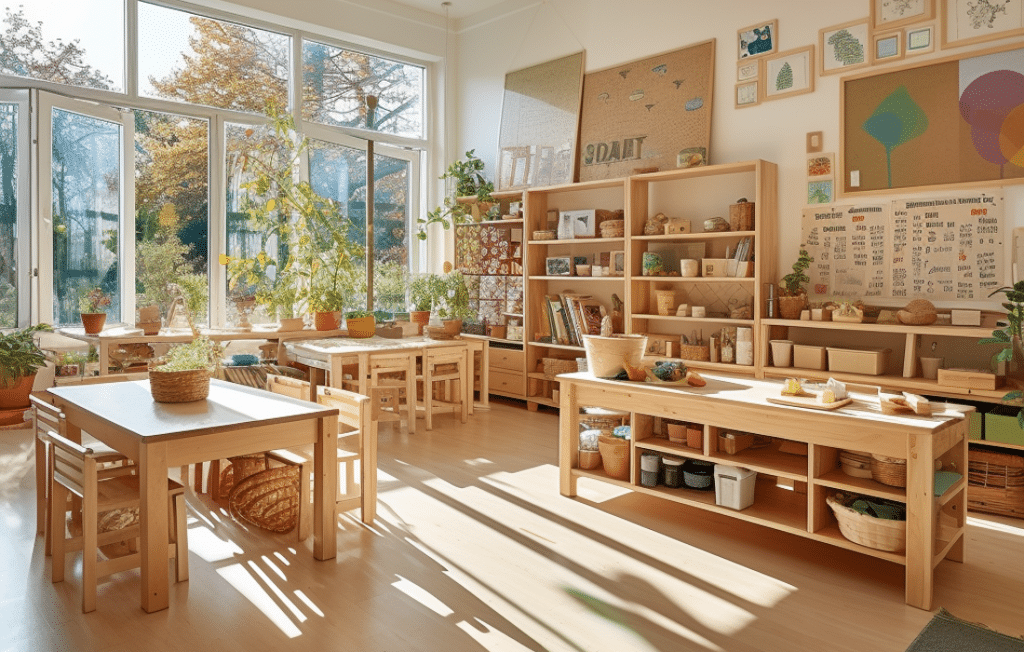Have you ever wondered how classroom seating arrangements impact preschoolers’ learning experiences? Do you believe that traditional rows of desks and chairs are the best choice for young learners? In this article, we’ll explore the concept of flexible seating and why it’s gaining popularity in preschool environments.
This approach allows children to choose where and how they sit, fostering independence, collaboration, and a love for learning. It provides opportunities for movement, helps address diverse learning styles, and promotes a positive classroom atmosphere.
What is Flexible Seating?
Flexible seating refers to the practice of allowing children to choose where and how they sit in the classroom. Instead of traditional rows of desks and chairs, flexible seating provides a variety of seating options such as bean bags, floor cushions, wobble stools, and even standing desks. The idea is to create a space that accommodates different learning styles and promotes active engagement.
Why should preschools consider implementing flexible seating?
Flexible seating allows children to have more control over their learning experience. By providing various seating options such as bean bags, floor cushions, wobble stools, and even standing desks, children have the freedom to choose a seat that best suits their needs and preferences. This autonomy empowers them to take ownership of their learning space and encourages a sense of responsibility.
Research has shown that movement positively impacts learning. By incorporating flexible seating options that allow for movement, such as wobble stools or exercise balls, preschoolers can engage their bodies while engaging their minds. This movement increases blood flow to the brain, improves focus and concentration, and enhances cognitive function. It also helps to release excess energy, which can be particularly beneficial for active preschoolers.

But what about the potential for distraction?
While some may worry that flexible seating could lead to distraction and a lack of focus, studies have actually shown the opposite. When children have the freedom to choose their seating, they are more likely to find a comfortable and conducive position for learning. This increased comfort and engagement can lead to improved attention spans and a more focused learning environment.
In addition to the physical benefits, flexible seating also promotes social interaction and collaboration. Traditional seating arrangements can sometimes limit interaction between students, whereas flexible seating encourages children to work together, share ideas, and problem-solve as a group. This collaborative environment fosters important social skills, such as communication, empathy, and teamwork.
Enhanced Collaboration and Communication
Flexible seating also promotes collaboration and communication among preschoolers. When children have the freedom to move around and sit next to different classmates, they are more likely to engage in group discussions, share ideas, and work together on projects. This dynamic and interactive environment encourages social interaction and the development of essential communication skills from a young age.
ncreased Physical Activity
Sitting still for long periods can be challenging for preschoolers. Traditional seating arrangements often limit movement and physical activity. With flexible seating, children have the opportunity to wiggle, bounce, and move around while still engaging in their learning activities. This added physical activity not only helps to release excess energy but also improves blood circulation and overall well-being.

Enhanced Comfort and Posture
Another significant advantage of flexible seating is the improved comfort and posture it offers. Traditional chairs and desks may not be ergonomically designed for young children, leading to discomfort and poor posture. Flexible seating options such as stability balls or floor cushions provide a more comfortable and supportive seating experience, promoting better posture and reducing the risk of musculoskeletal issues.
Boosted Creativity and Engagement
When preschoolers are given the freedom to choose their seating, it sparks creativity and promotes an engaging learning environment. Children can select a seating option that suits their personal preferences and allows them to feel more comfortable and inspired. This freedom of choice empowers children to take ownership of their learning journey and encourages them to explore their creativity.
Improved Classroom Management
Contrary to popular belief, flexible seating can actually improve classroom management. When children are given the responsibility to choose their seating, they are more likely to take ownership of their behavior and follow classroom rules. The flexibility in seating options also allows teachers to easily rearrange the classroom setup to accommodate different activities and teaching styles, creating a more versatile and adaptable learning space.
Promotion of Independence and Decision-Making Skills
Flexible seating fosters independence and decision-making skills in preschoolers. By allowing children to make choices about their seating, they develop important decision-making skills from a young age. This sense of autonomy and responsibility extends beyond the classroom and prepares children for future challenges and decision-making situations.

Improved Emotional Well-being
Creating a comfortable and supportive learning environment through flexible seating can have a positive impact on children’s emotional well-being. When children feel comfortable and engaged in their learning space, they are more likely to experience positive emotions and develop a love for learning. This positive emotional state can contribute to improved academic performance and overall well-being.
Conclusion
In conclusion, flexible seating offers numerous benefits in preschool environments. From improved focus and concentration to enhanced collaboration and creativity, the advantages of providing children with a choice in their seating arrangements are clear. By embracing flexible seating, we can create engaging and comfortable learning spaces that cater to the diverse needs of preschoolers. Let’s give our little ones the freedom to sit, learn, and grow in a way that suits them best!












